
On this day in history events for 23-29 May.
[Read More...]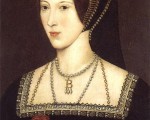
1511 – Burial of Walter Fitzsimons, Archbishop of Dublin and Lord Deputy of Ireland, in the nave of St Patrick's Cathedral.
1532 – Resignation of Sir Thomas More as Chancellor.
1536 – Archbishop Cranmer visited Queen Anne Boleyn at the Tower of London. It is thought that his visit's purpose was to get Anne to confess to an impediment to her marriage and to consent to him dissolving her marriage to Henry VIII. This would disinherit and bastardise her daughter Elizabeth. Click here to read more.
1544 – Death of John Skewys, lawyer and chronicler.
[Read More...]

Yay! I’m so excited! On 24th September eighteen of MadeGlobal Publishing’s authors will be in London for “an evening with the authors”. This is your chance to mingle with 18 Tudor history authors (many of whom are Tudor Society contributors), have your photo taken with them by a professional photographer, get their autographs, discuss your book idea with MadeGlobal Publishing, and fire questions at the authors in a Q&A session.
[Read More...]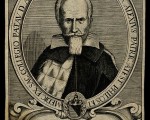
On 17th March 1565, Alexander Ales (also known as Alesius and Aless), theologian and reformer, died in Edinburgh, Scotland.*
Alexander Ales was born Alexander Allane or Alan at Edinburgh on 23 April 1500. From the age of twelve he was educated at the University of St Andrews, at St Leonard’s College, graduating BA after three years there. Ales became friends with theologian Philip Melancthon in 1532 when Ales began studying at Wittenberg University, and he began to be concerned with making the Bible available in the vernacular. He published an open letter to James V of Scotland in 1533, Alexandri Alesii epistola contra decretum quoddam episcoporum in Scotia, appealing for him to annul recent legislation making it illegal to own or distribute the New Testament in the vernacular. When the Catholic Johannes Cochlaeus, countered this with a letter to James accusing Ales of translating the New testament and sending it to Scotland, and claiming that it would cause unrest, Ales answered with Alexandri Alesii Scotti responsio ad Cochlei calumnias. In this letter, Ales emphasised how Continental reformers were simply trying to lead people back to the Bible and the teaching of the Early Church.
[Read More...]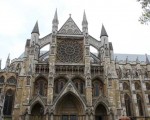
On 20th February 1547, Shrove Sunday, King Edward VI was crowned king at Westminster Abbey.
Chronicler Charles Wriothesley recorded:
“The twentith daie of Februarie, being the Soundaie Quinquagesima, the Kinges Majestie Edward the Sixth, of the age of nyne yeares and three monthes, was crowned King of this realme of Englande, France, and Irelande, within the church of Westminster, with great honor and solemnitie, and a great feast keept that daie in Westminster Hall…..”
[Read More...]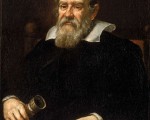
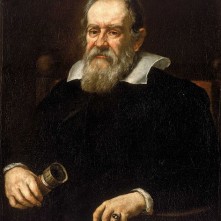
Galileo Galilei
1499 – Death of James Goldwell, Bishop of Norwich, at the bishop's palace in Hoxne, Suffolk. He was buried in Norwich Cathedral, in the chantry chapel.
1503 – Death of Henry Deane, administrator and Archbishop of Canterbury. As well as serving Henry VII as Archbishop, Deane also served as Chancellor of Ireland, Deputy Governor for Prince Henry and Keeper of the Great Seal. He died at Lambeth Palace and was buried at Canterbury Cathedral at a lavish funeral.
1536 – Death of Richard Rawlins, Bishop of St David's and former warden of Merton College.
1551 - Thomas Arden, businessman and inspiration for the 1592 Elizabethan play, “The Tragedie of Arden of Feversham and Blackwill”, was murdered by his wife, Alice, and her lover, Thomas Morsby, and conspirators.
1564 – Birth of Galileo Galilei, the Italian physicist, mathematician, astronomer, and philosopher, in Pisa, Italy. He was one of the central figures of the Scientific Revolution and supported Copernicanism (the heliocentric model). He has been referred to as “the Father of Modern Science”, “the Father of Modern Physics” and “the father of modern observational astronomy”. He is also known for his discovery of the Galilean Moons (Jupiter's satellites), his improved military compass and his work on the telescope.
1571 – Death of Sir Adrian Poynings, soldier. He served as a soldier in Boulogne from 1546 to 1550, when he was made Lieutenant of Calais Castle, then in the St Quentin campaign of 1557 and in Le Havre in 1562.
1598 – Death of John May, Bishop of Carlisle, at Rose Castle, his episcopal residence. He was buried in Carlisle Cathedral.
1616 – Death of Sir George Carey, Lord Deputy of Ireland. He was buried at Cockington, Devon.
[Read More...]
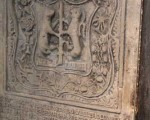
Today has gone down in history as the anniversary of the execution of Lady Jane Grey, but she wasn't the only one executed that day, her husband, Lord Guildford Dudley, was also executed.
Guildford was born in around 1535 and was the fourth surviving son of John Dudley, Duke of Northumberland, and his wife Jane (née Guildford). Guildford's family had negotiated for him to marry Margaret Clifford, daughter of Henry Clifford, 1st Earl of Cumberland, but on 25th May 1553 he married Lady Jane Grey, in a triple marriage ceremony which also saw his sister Katherine marrying Lord Henry Herbert, son of the Earl of Pembroke, and Jane's sister Katherine marrying Lord Henry Hastings. They got married at the Dudley family's London residence, Durham Place.
[Read More...]
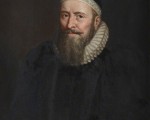
On this day in history, 4th February 1555, John Rogers, clergyman and Biblical editor, was burned at the stake at Smithfield. Rogers was the first England Protestant burned in Mary I’s reign after being condemned as a heretic. he refused the chance of a last minute pardon if he recanted, and died bravely. His wife and eleven children, one being newborn and at the breast, attended his burning. Martyrologist John Foxe recorded that Rogers “constantly and cheerfully took his death with wonderful patience, in the defence and quarrel of the Gospel of Christ.”
[Read More...]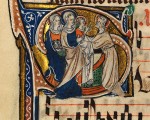
Candlemas, or the the Feast of the Presentation of Christ in the Temple and the Purification of the Blessed Virgin, is celebrated on 2nd February. It commemorates the purification (or churching, as medieval people would have seen it) of the Virgin Mary forty days after the birth of Jesus Christ, when it was traditional for the mother to make an offering or sacrifice according to Jewish law, and the presentation of the baby Jesus at the temple in Bethlehem.
[Read More...]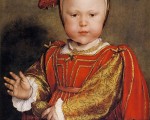
 Today, author Sarah Bryson shares with us an article on Edward VI's christening.
Today, author Sarah Bryson shares with us an article on Edward VI's christening.
In early 1537, Queen Jane Seymour, Henry VIII's third wife, became pregnant. Henry ordered refurbished suites at Hampton Court Palace for his Queen and also a set of new suites for the longed-for son that he believed Jane would bring him. Astoundingly, Henry only gave his builders five months to add these huge rooms and additions to Hampton Court! Hundreds of men were hired for these magnificent additions and as well as being paid overtime Henry VIII also ordered candles so the men could work at night.
[Read More...]
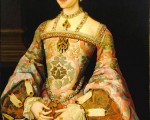
We tend to think of her as the woman who comes from nowhere, she’s not. In many ways she’s the most interesting, the most exciting, the best educated, and the cleverest of Henry’s wives. -David Starkey
Katherine Parr has been remembered through history as King Henry VIII’s sixth and final wife. The fortunate wife that survived. She has been labelled as merely Henry’s nurse, tending to the sickly king’s infirmities. Essentially, she is believed to be little more than Henry’s companion in his final years, with no great achievements of her own. She is often viewed as a wife of lesser importance, in contrast to the hugely popular Anne Boleyn whose legacy has been carried through centuries of intrigue and fame. This article intends to demystify the myths associated with Katherine Parr’s turbulent life, thus to reveal a more realistic view of a women who was well read, deeply religious and ultimately important during her time.
[Read More...]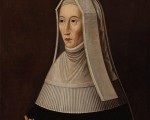
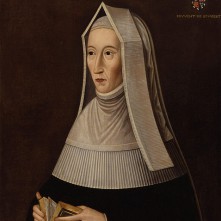
Lady Margaret Beaufort
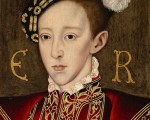
Edward VI was born on 12 October 1537 at Hampton Court Palace. He was the son of Henry VIII and his third wife Jane Seymour, who died twelve days after giving birth to him, probably of puerperal fever. He was tutored by scholars such as John Cheke, Richard Cox, Roger Ascham and Jean Belmain, and it appears that he was an intelligent child. By the age of twelve he was undertaking work on religious issues and controversies and had written a treatise about the Pope being the Antichrist.
Henry VIII, died on 28th January 1547, making Edward King Edward VI of England. Edward was only nine years old and far too young to rule over the country himself so a Council of Regency was set up, according to Henry VIII’s will. Sixteen executors had been named by Henry to act as a regency council until Edward came of age. The council members had been appointed as equals, but Edward’s uncle, Edward Seymour, took the lead and became Lord Protector of the Realm. Seymour was not content with just being Lord Protector, by 1547 he had convinced the young King to sign letters patent giving him the right to appoint members of his choosing to the Privy Council and to only consult them when he himself chose to.
[Read More...]